Art Deco Era Jewelry: The Style Revolution of the Jazz Age
Part 1 of 4
Picture this: it's 1925, jazz music is filling the air, women are dancing the Charleston in dropped-waist dresses, and the world has just emerged from the shadows of World War I into an era of unprecedented optimism and prosperity. You could feel that electric energy of change. That's exactly the spirit that gave birth to one of jewelry's most revolutionary movements: Art Deco.
As we continue our journey through jewelry's most fascinating eras, we're leaving behind the romantic curves and nature-inspired motifs of the Edwardian period and stepping boldly into the geometric glamour of Art Deco. This wasn't just a style shift: it was a complete cultural revolution that transformed how we thought about beauty, design, and self-expression.
The Birth of a New World
The Art Deco movement didn't just appear overnight. It emerged from the ashes of World War I, when society was ready to celebrate, innovate, and break free from the past. The 1920s brought us the Roaring Twenties, the Jazz Age, and a generation determined to live life to the fullest. Women had gained the right to vote, hemlines were rising, and traditional social structures were being challenged at every turn.
I find it fascinating how jewelry always reflects the times we live in. Think about what you're wearing right now: doesn't it somehow capture who you are and the world around you? During the Art Deco era, people wanted their jewelry to be bold, modern, and unapologetically different from their grandparents' pieces.
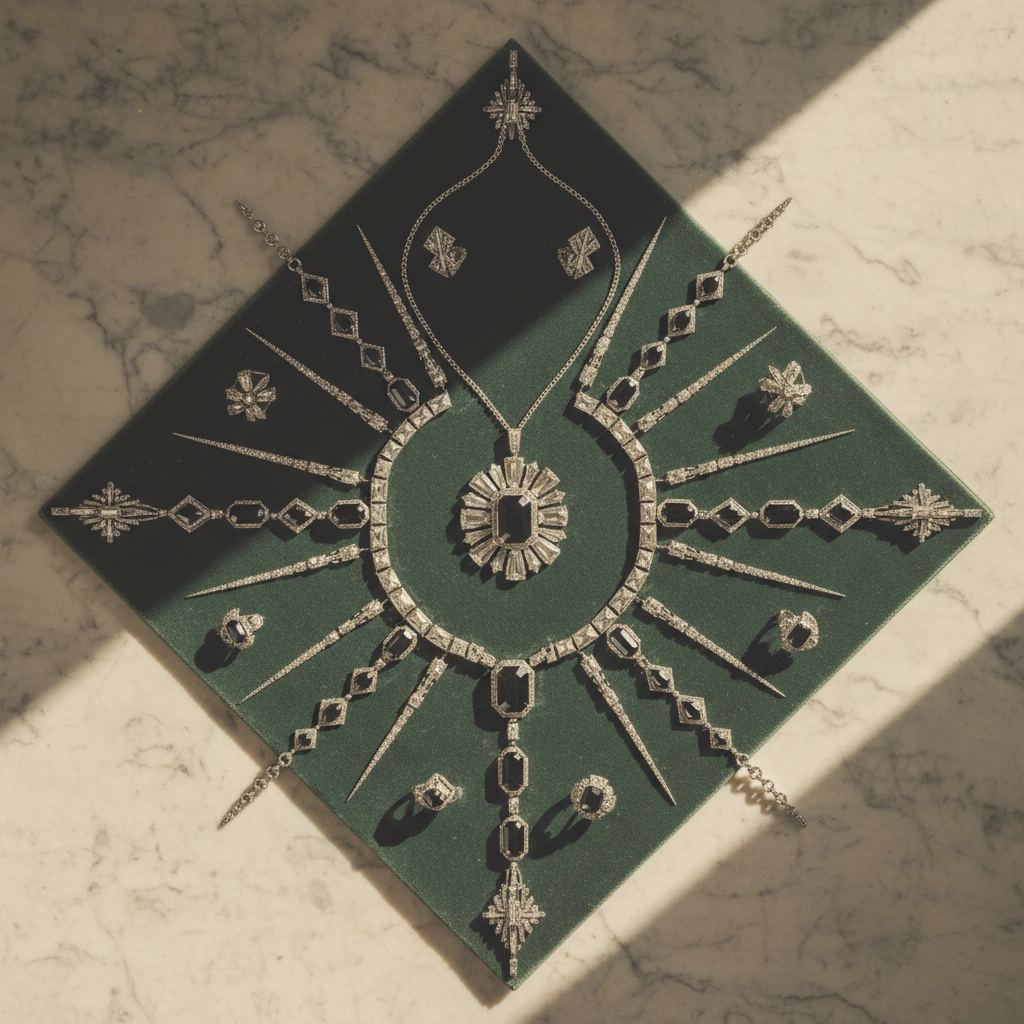
The movement got its official name from the 1925 International Exposition of Modern Decorative and Industrial Arts in Paris, but its influences were already spreading like wildfire across the globe. Suddenly, everyone wanted jewelry that looked like it belonged in the machine age: streamlined, efficient, and geometrically perfect.
A Design Revolution: Out with Curves, In with Lines
What strikes me most about Art Deco jewelry is how completely it rejected everything that came before. Where Edwardian pieces whispered with delicate filigree and flowing lines, Art Deco pieces practically shouted with bold geometric shapes and razor-sharp angles.
The designers of this era fell in love with mathematics: triangles, rectangles, circles, and trapezoids became their artistic vocabulary. But this wasn't cold, calculated design. There was something deeply emotional about these precise forms, as if they captured the era's confidence in human innovation and progress.
Symmetry became sacred. Every element had to balance perfectly with its counterpart, creating a sense of order and harmony that felt both modern and timeless. When I look at Art Deco pieces today, I'm amazed by how they can feel both structured and dynamic at the same time.
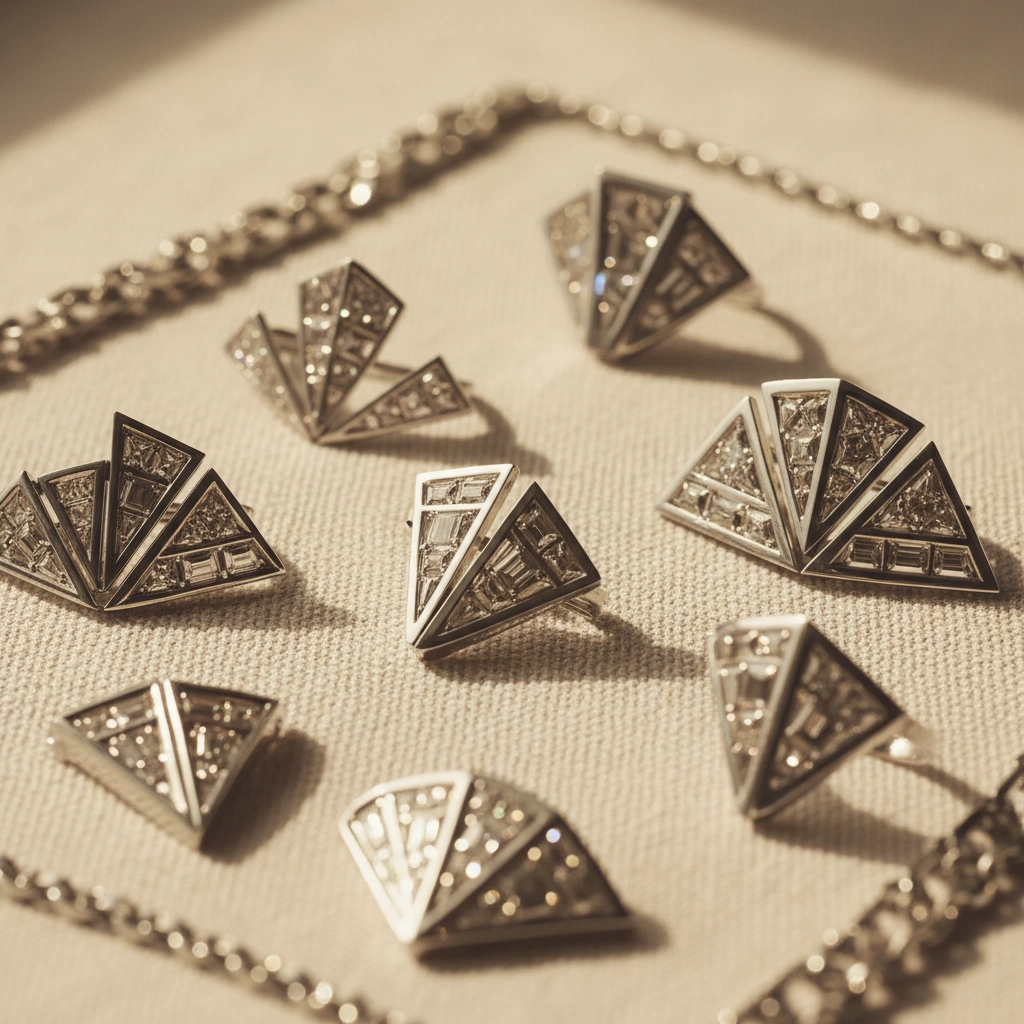
The influence of Cubism is unmistakable in these designs. Just as Picasso was breaking down forms into geometric shapes on canvas, jewelry designers were doing the same with precious metals and stones. But they weren't just copying art movements: they were creating something entirely new that spoke to the machine age's love of streamlined efficiency.
A Rainbow of Innovation: Materials and Color
One of the most exciting aspects of Art Deco jewelry was its fearless approach to color. While previous eras had been somewhat conservative with gemstone choices, Art Deco designers embraced a vibrant palette that would make a peacock jealous.
Emeralds, rubies, sapphires, jade, coral, lapis lazuli, and turquoise all found their way into stunning geometric compositions. But perhaps the most iconic Art Deco color combination was the dramatic contrast of black and white: onyx set against brilliant diamonds, creating pieces that were both sophisticated and striking.
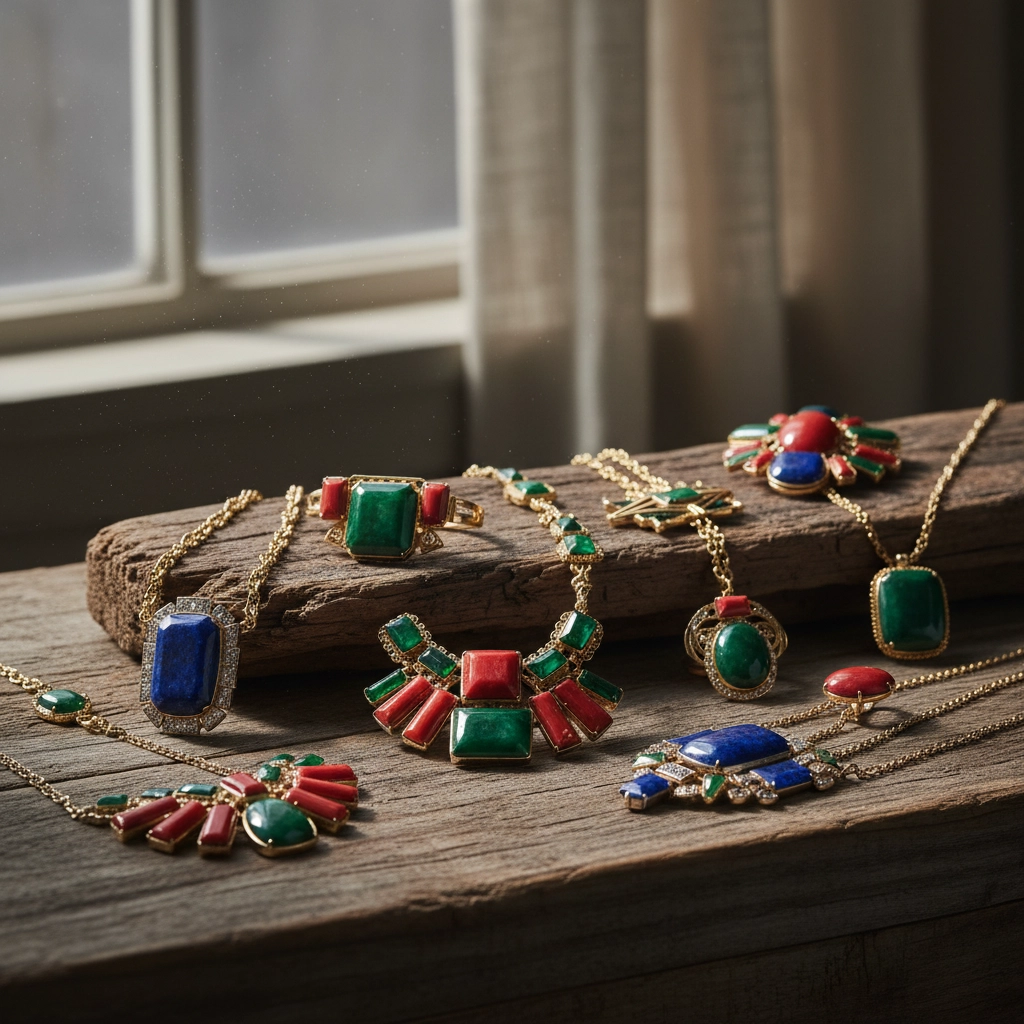
The discovery of King Tutankhamun's tomb in 1922 sent shockwaves through the design world, and jewelry designers quickly incorporated Egyptian motifs into their work. Suddenly, everyone wanted to wear a piece of ancient mystery, but reimagined through a thoroughly modern lens.
Platinum became the metal of choice during this era, prized for its strength and brilliant white color that perfectly complemented both diamonds and colored stones. The precision required to work with platinum matched the era's emphasis on technical perfection and clean lines.
Signature Styles That Defined an Era
Let me paint you a picture of what Art Deco jewelry looked like in its heyday. Imagine long, geometric pendants designed to complement the dropped waistlines of 1920s fashion, often featuring tassels or fringes that moved with the wearer. These weren't just accessories: they were statements of independence and modernity.
The rings of this era were particularly spectacular. Think massive emerald-cut stones surrounded by perfectly arranged smaller diamonds, or stacked bands that created the illusion of multiple rings worn together. The famous Cartier "Trinity" or rolling ring: three interlocked bands of different colored gold: was created during this period and remains popular today.
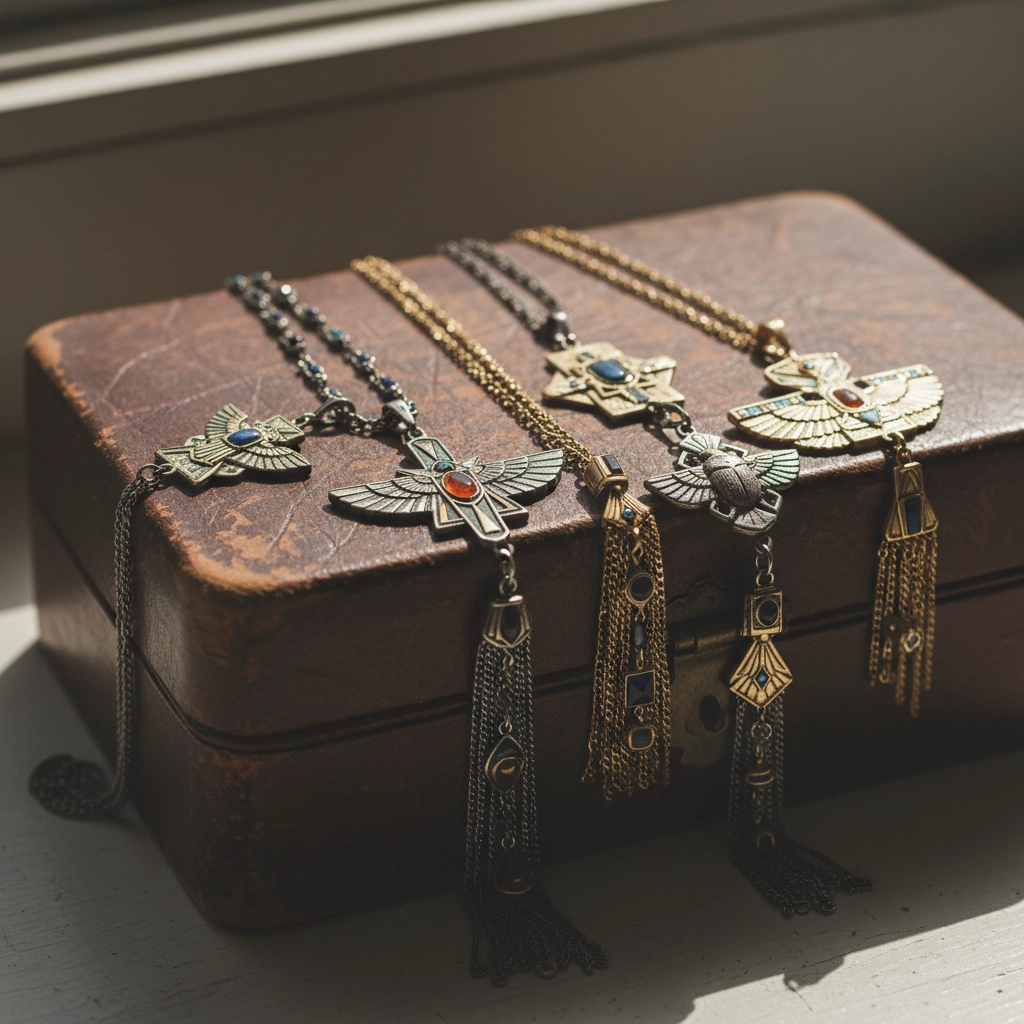
Brooches became architectural marvels in miniature, featuring skyscraper-inspired designs that celebrated the era's love affair with modern urban landscapes. These pieces often incorporated multiple levels and geometric patterns that seemed to capture the energy of a bustling city.
What I find most remarkable about Art Deco jewelry is how it embraced both the exotic and the ultramodern. Designers drew inspiration from ancient Egyptian, Chinese, and Indian art, but filtered these influences through a completely contemporary sensibility. The result was jewelry that felt both worldly and futuristic.
Technical Mastery Meets Artistic Vision
The craftsmanship of Art Deco jewelry represents one of the highest points in the history of jewelry making. The intricate filigree work, the precision of calibré-cut stones fitted together like perfect puzzles, and the innovative use of pavé settings created pieces that were technical marvels.
Many of these techniques were so labor-intensive and required such specialized skills that they're nearly impossible to replicate today using modern manufacturing methods. When you hold an authentic Art Deco piece, you're literally holding a work of art that represents thousands of hours of skilled craftsmanship.
The Cultural Impact and Lasting Legacy
Art Deco jewelry perfectly captured the spirit of the Jazz Age: that intoxicating blend of optimism, rebellion, and celebration that defined the era. These pieces weren't just beautiful; they were symbols of a new way of thinking about design, luxury, and self-expression.
The movement's emphasis on geometric forms and bold contrasts established design principles that continue to influence jewelry makers today. You can see Art Deco DNA in everything from contemporary engagement rings to high-fashion statement pieces.
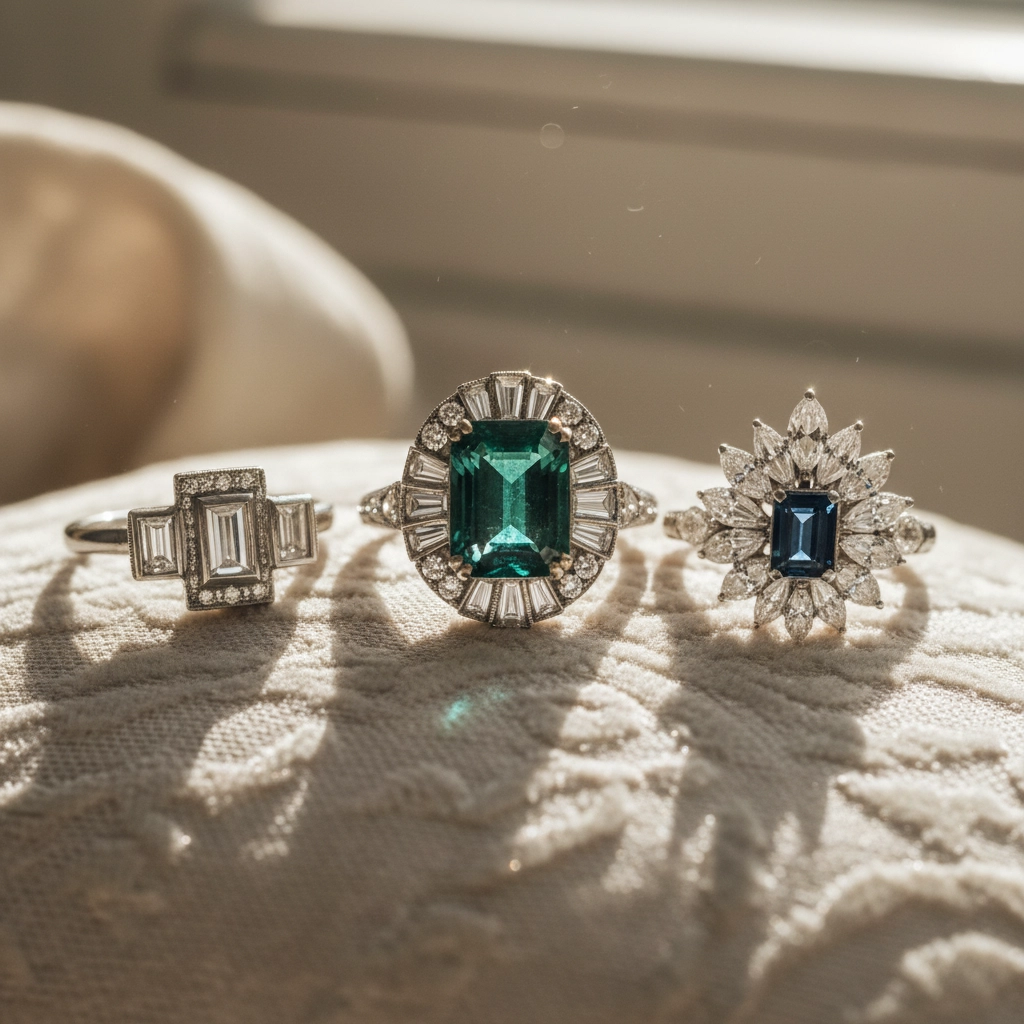
What makes Art Deco jewelry so enduringly popular is its perfect balance of sophistication and boldness. These pieces are elegant enough for the most formal occasions, yet dynamic enough to feel thoroughly modern. They remind us that great design transcends time: a well-made Art Deco piece looks just as stunning today as it did ninety years ago.
As I handle these remarkable pieces in my work, I'm constantly amazed by how they continue to speak to us. They represent a moment in history when anything seemed possible, when designers dared to completely reinvent what jewelry could be. In our own era of rapid change and innovation, perhaps that's exactly the kind of inspiration we need.
The Art Deco revolution taught us that jewelry could be more than just decoration: it could be a bold statement about who we are and the world we want to create. And honestly, isn't that exactly what the best jewelry has always done?
And that wraps up Part 1 of our Art Deco jewelry journey! We’ve set the stage with jazz-age energy, fresh optimism, and those iconic geometric designs—ready for all the sparkle and drama that’s still to come.
Stay tuned for Part 2 tomorrow: we’ll dive into the symbolism, designs, and the eye-catching motifs that made this era a true standout. Whether you’re a devoted collector or just curious for some vintage brilliance, you won’t want to miss what’s next!
Cheers,
Peter